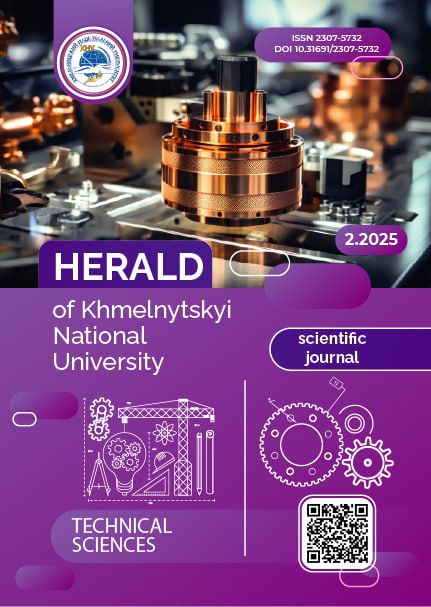RESILIENCE OF CONTROL TRANSMISSION SYSTEMS FOR UAVs UNDER ELECTRONIC WARFARE CONDITIONS: COMBINED SOLUTIONS FOR AUTONOMOUS ORIENTATION AND ADAPTIVE ANTENNAS
DOI:
https://doi.org/10.31891/2307-5732-2025-349-32Keywords:
unmanned aerial vehicles (UAVs), control systems, electronic warfare, active interference, spoofing, jamming, autonomous orientation, combined solutions, SLAM, GPS, LiDAR, radio signal suppression, adaptive antennas, cognitive radio, MIMOAbstract
The article examines combined solutions for autonomous orientation and adaptive antennas to ensure the resilience of unmanned aerial vehicle (UAV) control transmission systems under electronic warfare conditions. The objective of the study is to investigate and analyze the problem of enhancing the resilience of UAV control transmission systems in electronic warfare conditions using combined solutions of autonomous orientation and adaptive antennas. The classification of UAVs based on their operating mode and possible radio frequency spectrum interferences affecting control transmission resilience is considered. The primary threat to control systems is identified as electronic warfare (EW) measures, including: active jamming, spoofing, signal blocking (jamming). The main components of autonomous orientation are described, including inertial navigation systems (INS), optical sensors, magnetometers, and data processing algorithms. The study finds that ensuring high accuracy and reliability of UAV navigation requires a comprehensive approach that integrates INS, optical sensors, magnetometers, and AI-based data processing algorithms. Examples of combined autonomous orientation solutions for UAVs are provided. The article presents the potential of adaptive antennas in improving the resilience of UAV control transmission systems in electronic warfare conditions. This is achieved by interference suppression through the formation of narrow directional beams to minimize the impact of interference sources and by implementing adaptive beamforming algorithms. The deployment of adaptive antenna arrays necessitates the development of other technologies, including software-defined radio, cognitive radio, MIMO, and more. An action algorithm has been developed to assess the effectiveness and reliability of the proposed methods for UAV control transmission systems.
Downloads
Published
Issue
Section
License
Copyright (c) 2025 ДЕНИС ЛЕЖНЬОВ, КОСТЯНТИН РИБАКОВ (Автор)

This work is licensed under a Creative Commons Attribution 4.0 International License.

